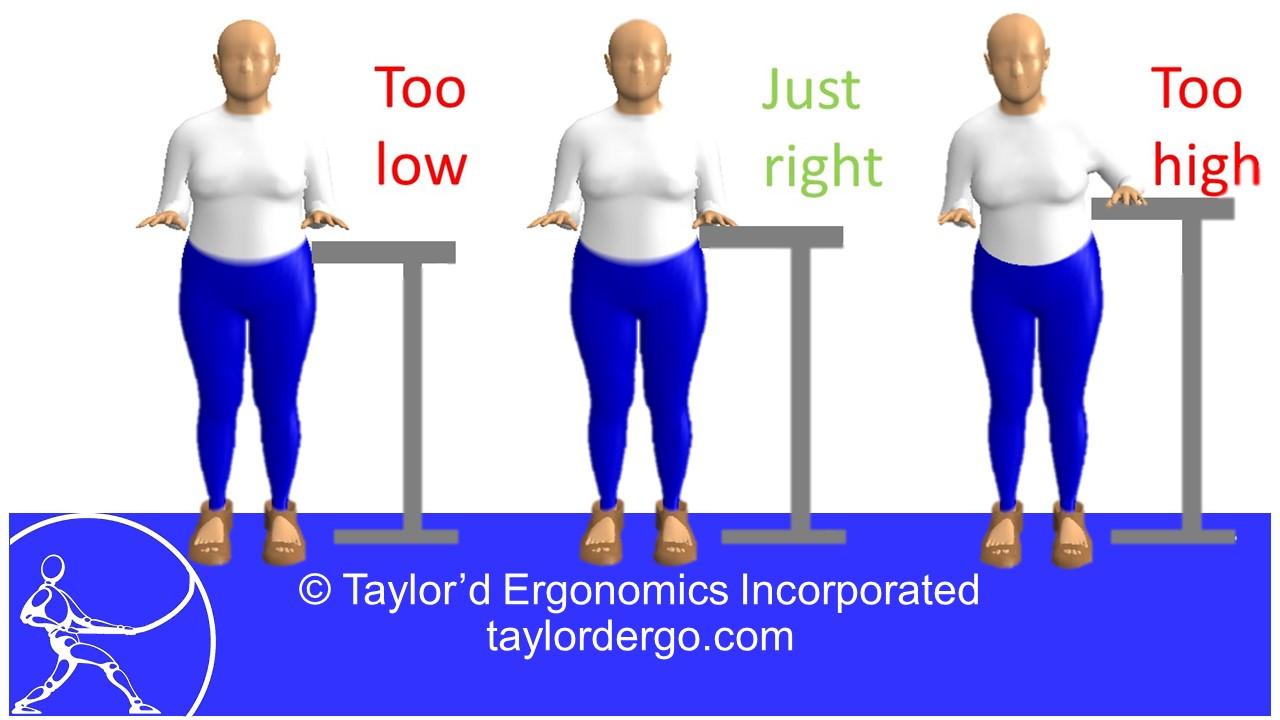What height should this work bench be?
This is a simple enough question, but getting to the answer is remarkably complex. The best height for a task depends on:
- The effort required. Heavier work should be lower than elbow height, whereas lighter work should be at elbow height.
- The precision required. If you need to use fine motor coordination for tasks like writing or soldering, you’ll want your forearms or elbows supported, which means the work surface should be higher than elbow height.
- The height of the worker. Contrary to popular belief, there is no one height that works for everyone. There is an ideal height for every task, relative to the worker’s elbow height, but not one perfect height that will accommodate all workers perfectly.
- The range of working heights required in the task. Most jobs involve a variety of tasks, at various heights. For example, retrieving parts from a shelving unit involves a range of work heights. We need to prioritize which items go on which shelves, based on the frequency of use and the item weights, but we also need to ensure that the shortest worker can reach the items on the top shelf.
Here are some useful numbers:
Standing adult elbow height ranges between 94 cm (37”, 5th percentile female) to 119 cm (46 ½”, 95th percentile male). A large male performing light work would probably prefer his hands to be at around 119 cm above the floor. If the work is heavier, he would prefer a lower height. In the image above, the middle worksurface is designed well for this worker to perform “light” work; the surface on the right would be okay for precision work, and the one on the left would be okay for heavier work.
If the work height for light work can adjust so that the work is done at the worker’s choice between 94 and 119 cm high, the height should accommodate at least 95% of workers. (This does NOT mean that any height between these two values is good!!)
You want average heights, don’t you?
Here you go: Average male elbow height is 110 cm (43 ½”), and average female elbow height is 101 cm (40”). If you design for “average adult” (at 41 ¾”), your design will be lower than ideal for more than half of all males, and higher than ideal for more than half of all females.
When you spend some time working on a “work height” recommendation, the natural solution is to promote adjustability. If the work can be raised or lowered, or the worker can be raised or lowered, then we can accommodate virtually everyone.
Does every task require height adjustability? No. If the task is not repetitive, not forceful, and falls within the reach capabilities of the workforce, then it may not benefit from adjustability. We flip light switches every day, and no one would suggest that they need to be adjustable.
Can you use portable step-stools or platforms instead of adjustability? Yes. I personally think we should avoid asking workers to step up and down within a repetitive work cycle, and carrying items up or down a step. But portable platforms have been very successful at some of our client sites, particularly where workers stand at a conveyor. We use lightweight polystyrene for these, so they are easy to move.
Working height questions rarely get “quick answers”. The best solution relies on an understanding of the job, who would be most at risk if the height is not appropriate, what options would available to accommodate those of larger or smaller stature, and design constraints.
Have a working height question? We’d be happy to help!


